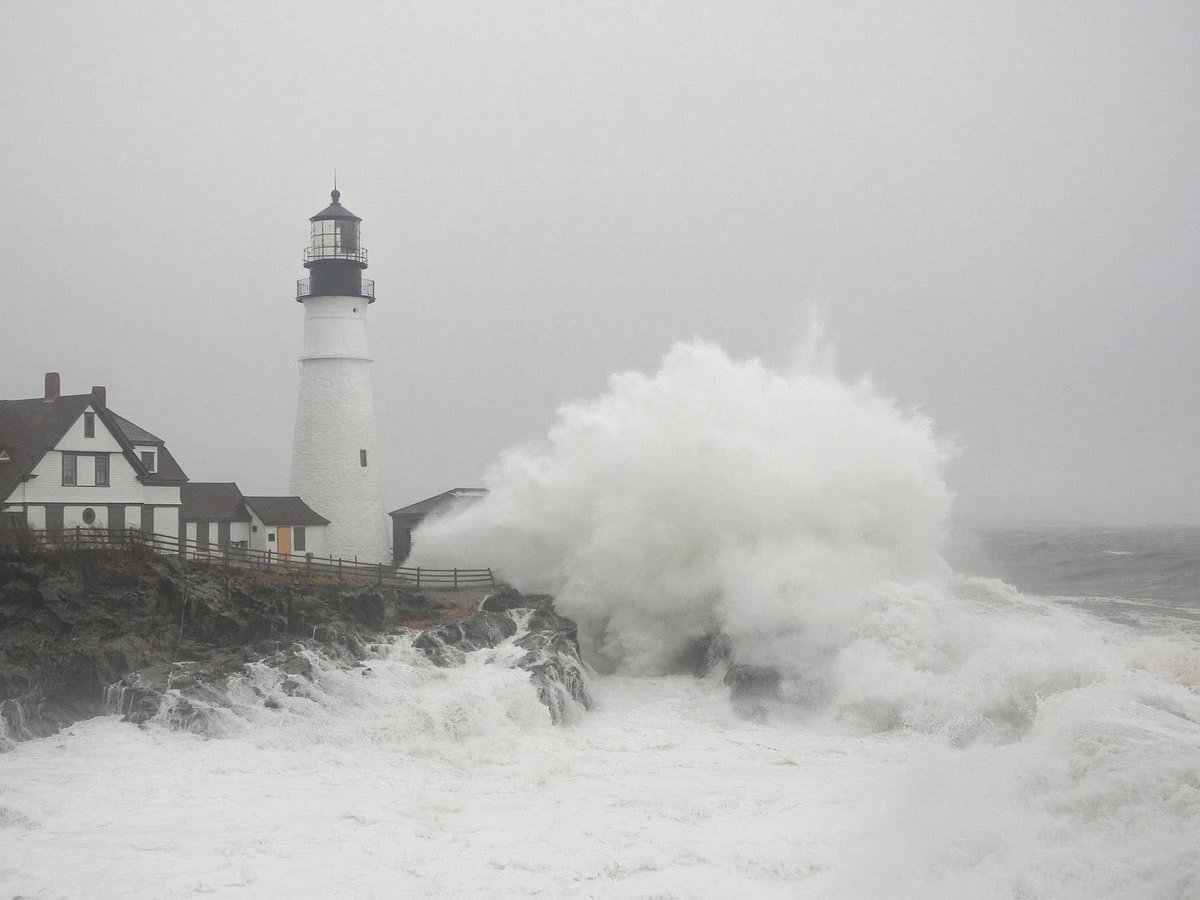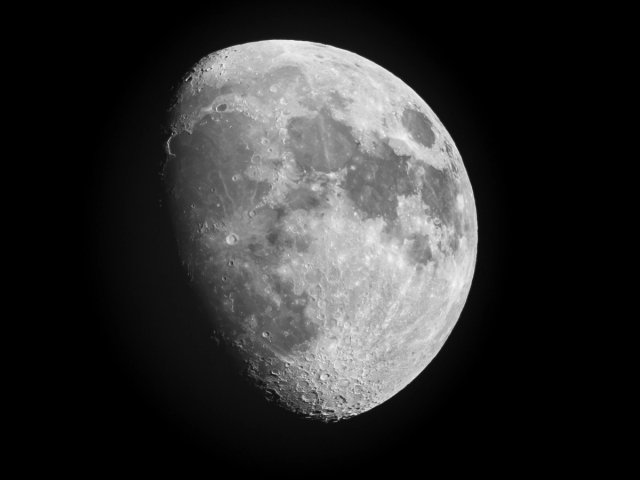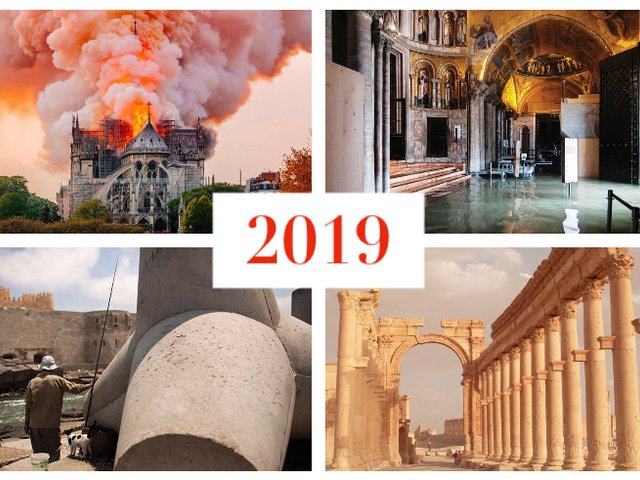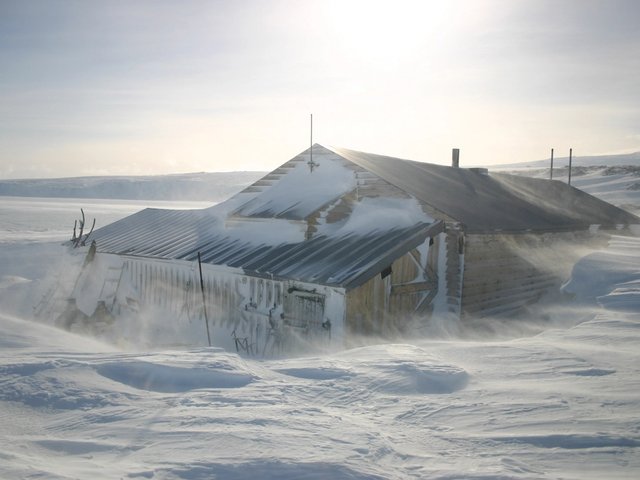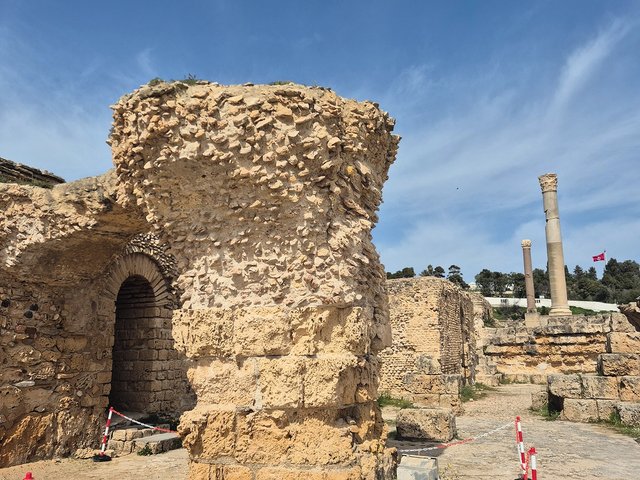“Lighthouses have this magical capture-the-imagination element to them,” says Tara Kelly, the executive director of Maine Preservation. “They’re romantic lone watchmen keeping our shores safe.”
But these coastal guardians, beloved by both Mainers and the 7.75 million tourists who come to New England’s northernmost state each summer, are facing troubles so serious that they have been spotlighted on the 2025 World Monuments Watch list. Being added to the list—a new one is drawn up every two years by the World Monuments Fund (WMF)—is a dubious distinction that recognises cultural heritage sites in dire straits. This puts Maine lighthouses in the same category as crumbling terracotta monastery sculptures in Portugal, ancient water-capturing majels in drought-stricken Tunisia, and the Kyiv Teacher’s House in war-torn Ukraine.
What the WMF designation brings to the coast of Maine, says Bob Trapani Jr, the executive director of the American Lighthouse Foundation, is much-needed hope in the form of awareness, advocacy and new resources. Of all the challenges the Maine lighthouses currently face, he says, the biggest is “inaction”.
A total of 66 lighthouses stitch 3,478 miles of Maine coastline, from the southern Whaleback Light in Kittery to Whitlocks Mill Light, whose beam reaches into Canada. Portland Head Light is the best known, drawing at least one million tourists annually. It was completed in 1791 under the direction of the first US president, George Washington, when Maine was still a part of the state of Massachusetts. Its 80ft tower guides navigation into New England’s second-largest shipping port. But this landmark, the most photographed lighthouse in the world, is not just a tower. The light-station site includes a two-storey keeper’s house (now a museum), a historic oil house, a fog signal building and other support structures.
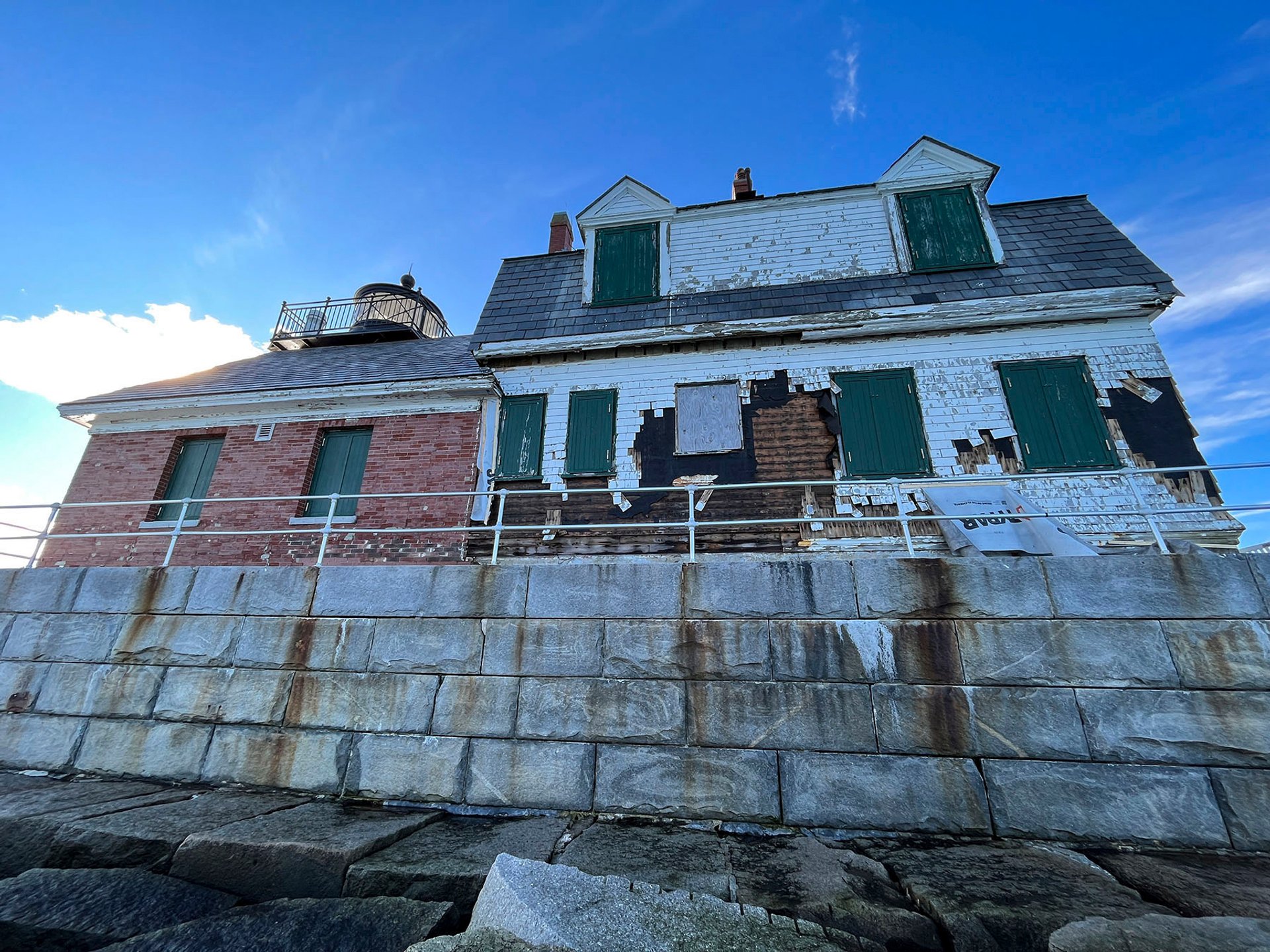
Damage caused to the Rockland Breakwater Lighthouse Photo: Bob Trapani
While light stations are renowned as fearless monuments to coastal traditions, those like Portland Head Light are facing unchecked challenges as a result of climate change. The situation came into sharp focus in January 2024, when back-to-back storms brought exceptionally high tides and flooding as well as powerful winds. In the aftermath, the then US president Joe Biden declared a “major disaster”. Portland Head Light’s walkways had been ripped apart and its tower door blown off its hinges. But that was not the worst of it, as Trapani would soon discover.
Trapani and Ford Reiche, the owner and restorer of Halfway Rock Lighthouse (once the most endangered lighthouse in the US), took to the skies to assess the situation. They surveyed dozens of light stations from the Kennebec River up to Mount Desert Island, and they checked out two of the country’s remotest lighthouses, which lie more than 20 miles offshore. The damage was disheartening. Brick walls had burst open and concrete supports heaved out of place. Historic houses had been flooded, battered and in some cases torn from their foundations. Two protective seawalls had even been destroyed by the storms. Damaged piers, walkways and boat ramps would hinder visitor access and hamper repairs. Trapani and Reiche estimated the damage at $5.5m. And the readily available resources to address it? Zero.
Beacons on the front lines
Modernisation has shifted the stewardship of lighthouses away from the federal government and into private and non-profit hands. The role of lighthouses in coastal communities is changing too. Automation by electrification has virtually eliminated human lighthouse keepers. And the emergence of digital navigation tools has diminished the lighthouse’s role in maritime safety, leading to neglect of the structures and properties. The Maine lighthouse community responded by piloting new approaches to ownership and adaptive reuse in the 1990s, which were later adopted across the country. But these beacons, many of which have stood strong since colonial times, may be facing their toughest adversary yet in the 21st century.
Lighthouses, Kelly says, were fundamentally built in harm’s way on cliffs and islands as navigational aids. “They face a beating in the best of conditions and have done so for more than a couple hundred years,” she says. “But they are more at risk given some of their low-lying positions and fully being on islands themselves.”
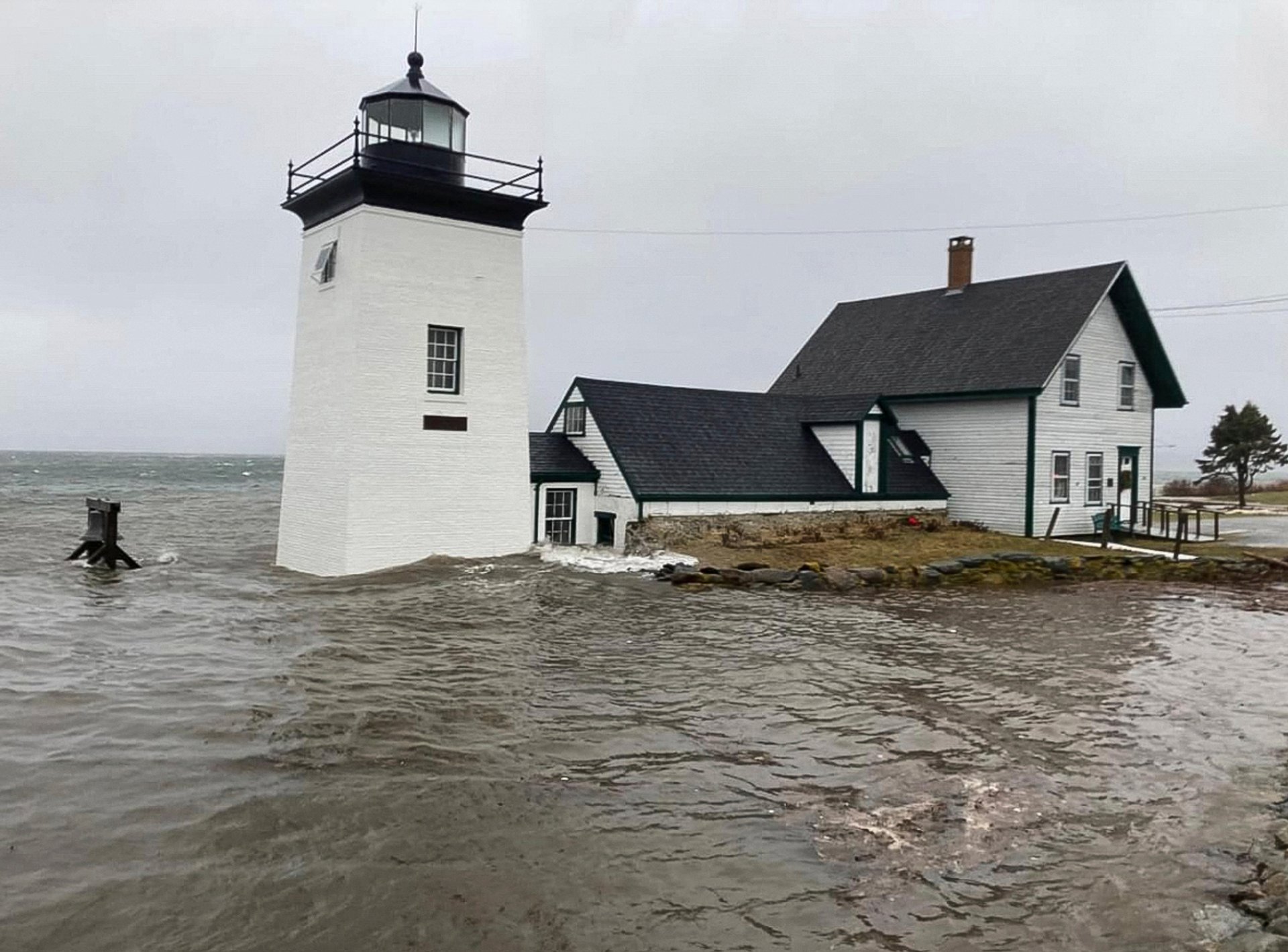
Flooding at the Grindle Point Light Station in January 2024 Photo: Bob Trapani
This situation is only going to get worse. The Gulf of Maine is warming at a rate three times the global average, with the local sea level predicted to rise between 1.5ft and 3ft by 2050. Winter storms are expected to become wetter, windier and more extreme. Last year’s storms caused $90m worth of damage to public infrastructure alone and devastated Maine’s working waterfront.
According to Trapani, years of lighthouse-preservation efforts were wiped out in a matter of hours. It was a wake-up call that required new thinking. Therefore, he worked with Maine Preservation to nominate the state’s lighthouses to WMF’s list.
WMF launched World Monuments Watch in 1996 to build awareness and leverage resources for cultural sites at dire risk of loss. To date, WMF has committed $120m to nearly 350 Watch sites around the world and helped local communities to raise a further $300m to protect them. Projects are selected for their potential to bring resilience and innovation to pressing challenges such as rapid urbanisation or natural disasters. Maine lighthouses fit this bill with their celebrated representation of coastal identity and vulnerability to climate change.
In addition to access to WMF’s global network of experts, the two-year Watch programme brings new resources, partnerships and much-needed data to the Maine lighthouse community. Its members are already exploring new collaborations to build awareness, and partnering with the University of New England to survey the sites and create case studies to help plan responses and engage decisionmakers and policymakers as well as new donors.
“They’re on the front lines, out in the water, out in the sea,” Trapani says of the lighthouses. “And as far as climate change is concerned, when we have success with these sites, it carries over into our coastal communities, which are also trying to become more resilient, figuring out how to deal with these tough issues. So I think they can serve as wonderful examples—a shining light, so to speak—for what is possible if we band together.”


